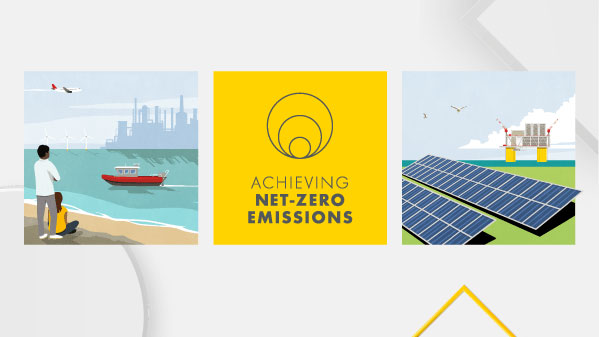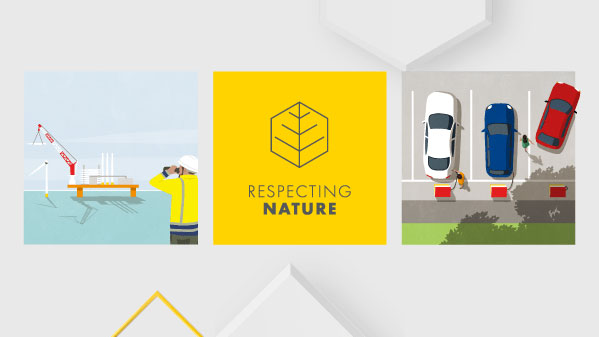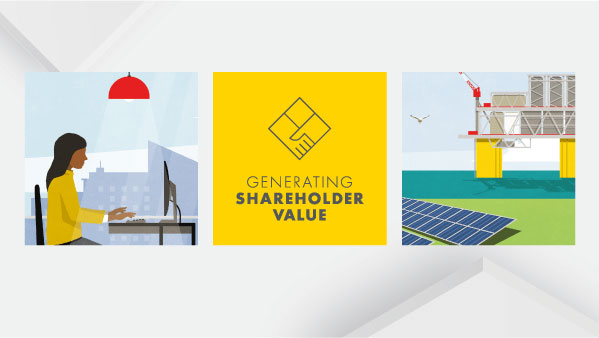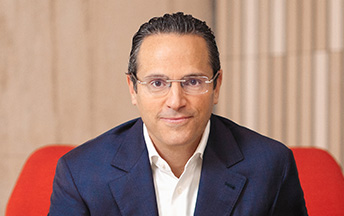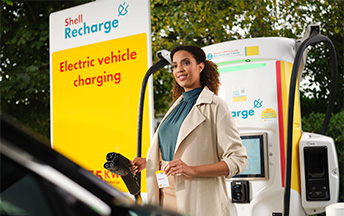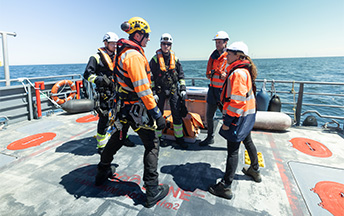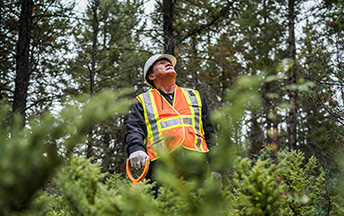Greenhouse gas emissions
Greenhouse gas emissions performance
In 2022, our total combined Scope 1 and 2 absolute greenhouse gas emissions (from assets and activities under our operational control) were 58 million tonnes on a CO2 equivalent basis, a 15% reduction compared with 2021 and a 30% reduction compared with 2016, the base year. Our Scope 3 emissions from energy products included in our net carbon intensity were 1,174 million tonnes of CO2 equivalent.
Our direct (Scope 1) greenhouse gas emissions decreased from 60 million tonnes of CO2 equivalent in 2021 to 51 million tonnes of CO2 equivalent in 2022.
Direct greenhouse gas emissions
Million tonnes CO2 equivalent
The reduction was achieved by divestments in 2021 and 2022 (including the Deer Park and Puget Sound refineries in the USA); the handover of operations in OML 11 in Nigeria in 2022; the shutdown or conversion of existing assets, including the shutdown of some units at the Shell Energy and Chemicals Park Singapore; and greenhouse gas abatement projects and the purchase of renewable electricity. These decreases were partly offset by the commissioning of Shell Polymers Monaca, our new polyethylene production facility, in the USA.
In 2022, we implemented a variety of measures to reduce the energy use and increase the energy efficiency of our operations. Examples of some of the principal measures taken in 2022 are listed in our 2022 Annual Report.
Scope 1 and Scope 2 greenhouse gas emissions changes from 2016 to 2021 and from 2021 to 2022
Million tonnes carbon dioxide equivalent (CO2e)
[B] In addition to reductions from GHG abatement and energy efficiency projects, this category also includes reductions from the permanent shutdown of the Convent and Tabangao refineries and the impact of transformational activities at our Shell Energy and Chemicals Park in Singapore.
[C] Excludes 5.80 million tonnes of CO2 captured and sequestered by the Shell-operated Quest CCS facility in Canada in 2016-2021. Scope 1 and 2 GHG emissions from operating Quest are included in our total emissions.
[D] Excludes 0.97 million tonnes of CO2 captured and sequestered by the Shell-operated Quest CCS facility in Canada in 2022. Scope 1 and 2 GHG emissions from operating Quest are included in our total emissions.
[E] Of the 2,010 thousand tonnes of reduction activities and purchased renewable electricity in 2022, around 80 thousand tonnes related to purchased renewable electricity.
[F] Change in output relates to changes in production levels, including those resulting from shutdowns and turnarounds as well as production from new facilities.
Our indirect greenhouse gas emissions associated with imported energy (Scope 2, consolidated using the operational control boundary) decreased from 8 million tonnes of CO2 equivalent in 2021 to 7 million tonnes of CO2 equivalent in 2022 (using the market-based method), in part, due to divestments.
We undertake external verification of our greenhouse gas emissions annually by LRQA. Our Scope 1 and 2 greenhouse gas emissions from assets and activities under our operational control and the emissions associated with the use of our energy products (Scope 3) included in our net carbon intensity have been verified to a level of limited assurance. Limited assurance means nothing has come to the verifier’s attention that would indicate the greenhouse gas data and information, as presented in the Greenhouse Gas Statement/Assertion, were not materially correct.
Read our most recent assurance statements at www.shell.com/ghg.


